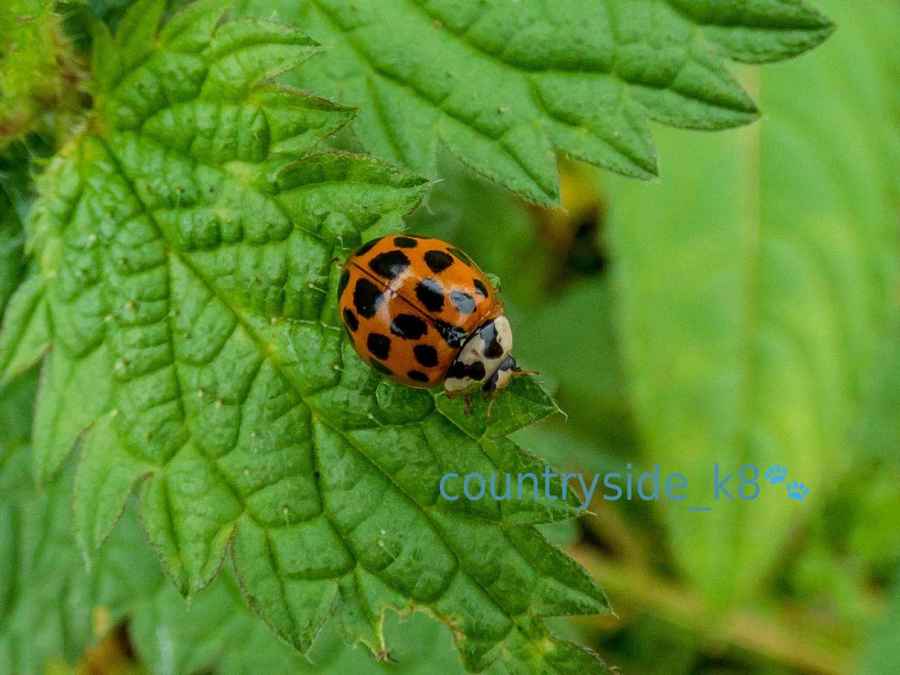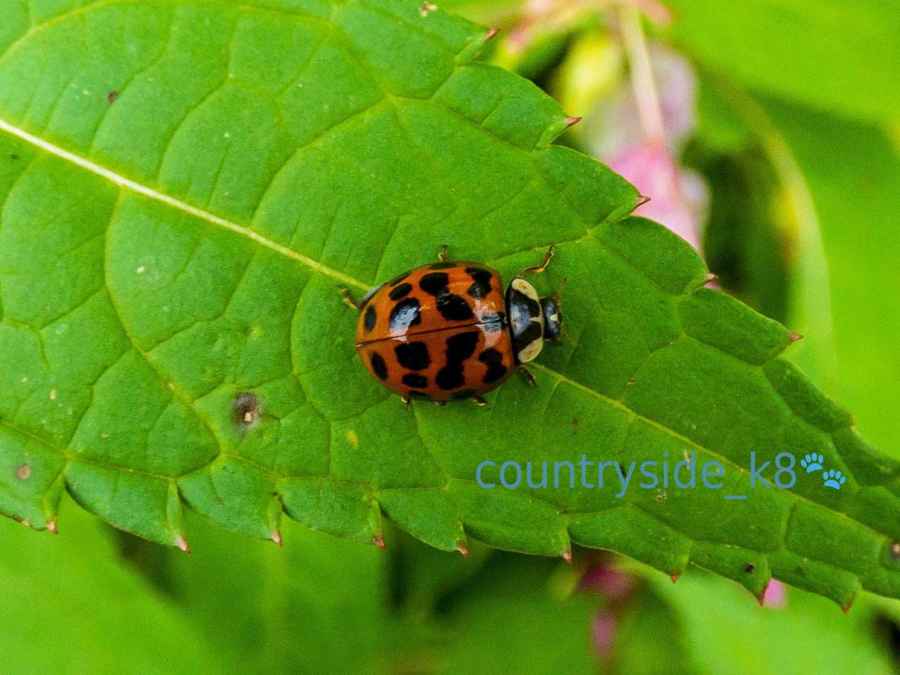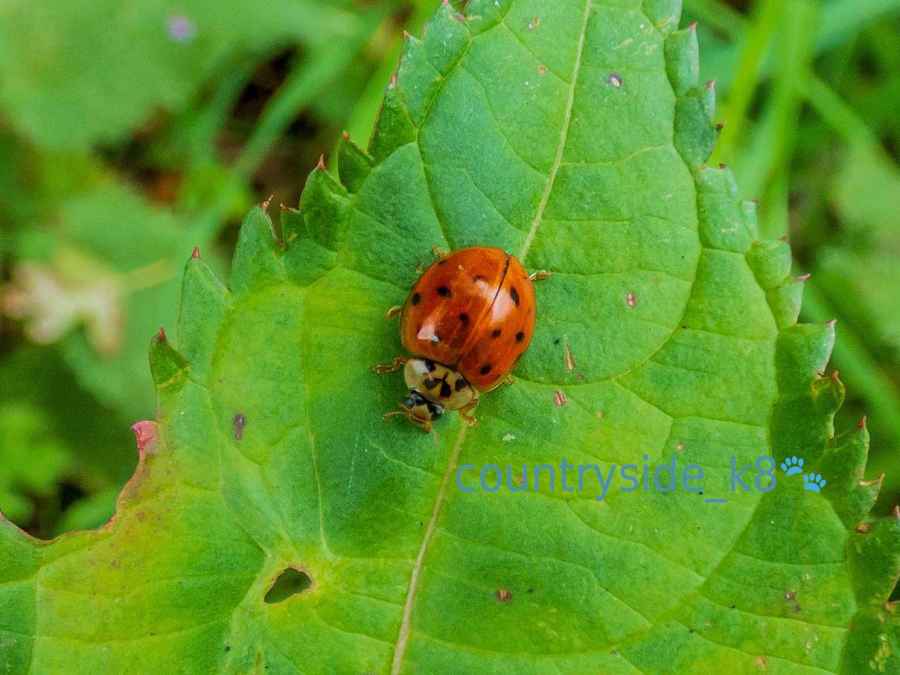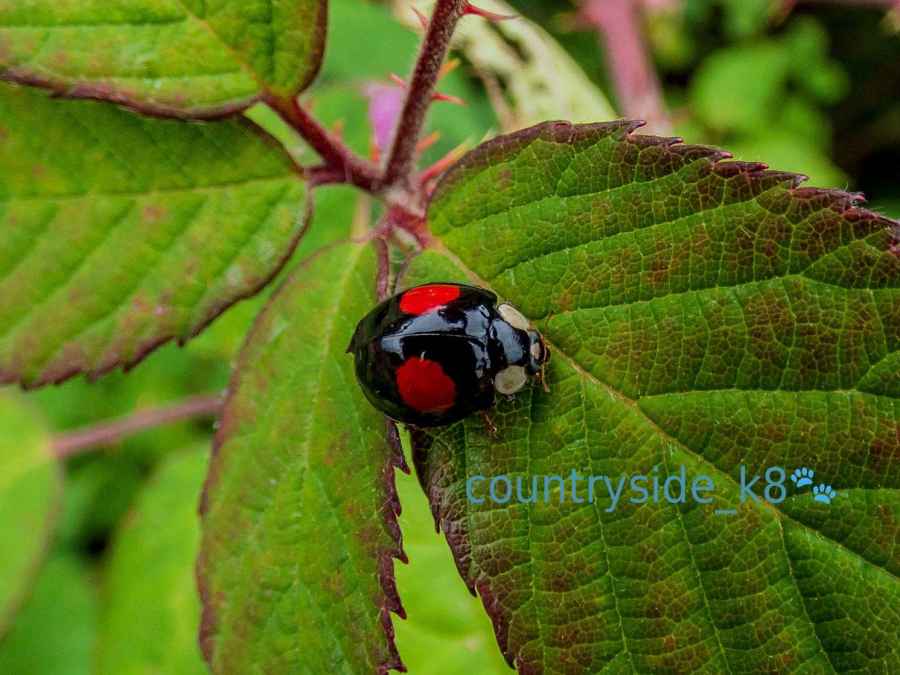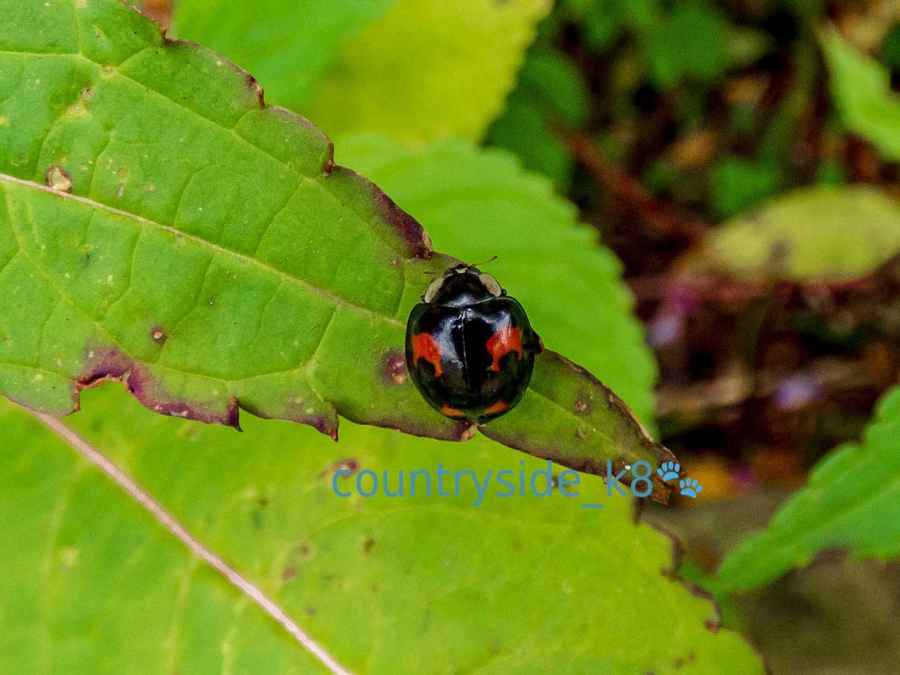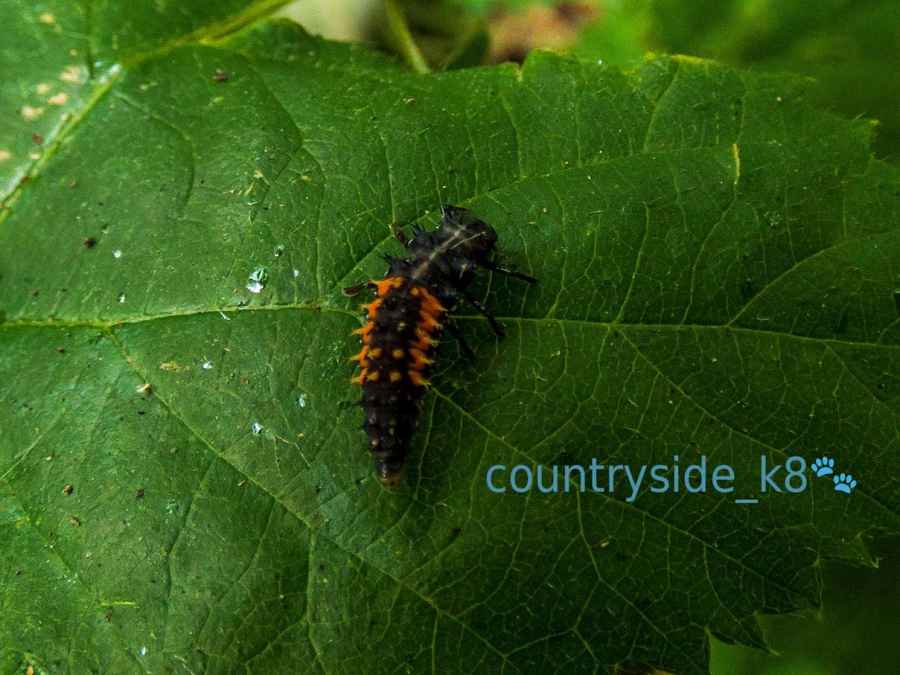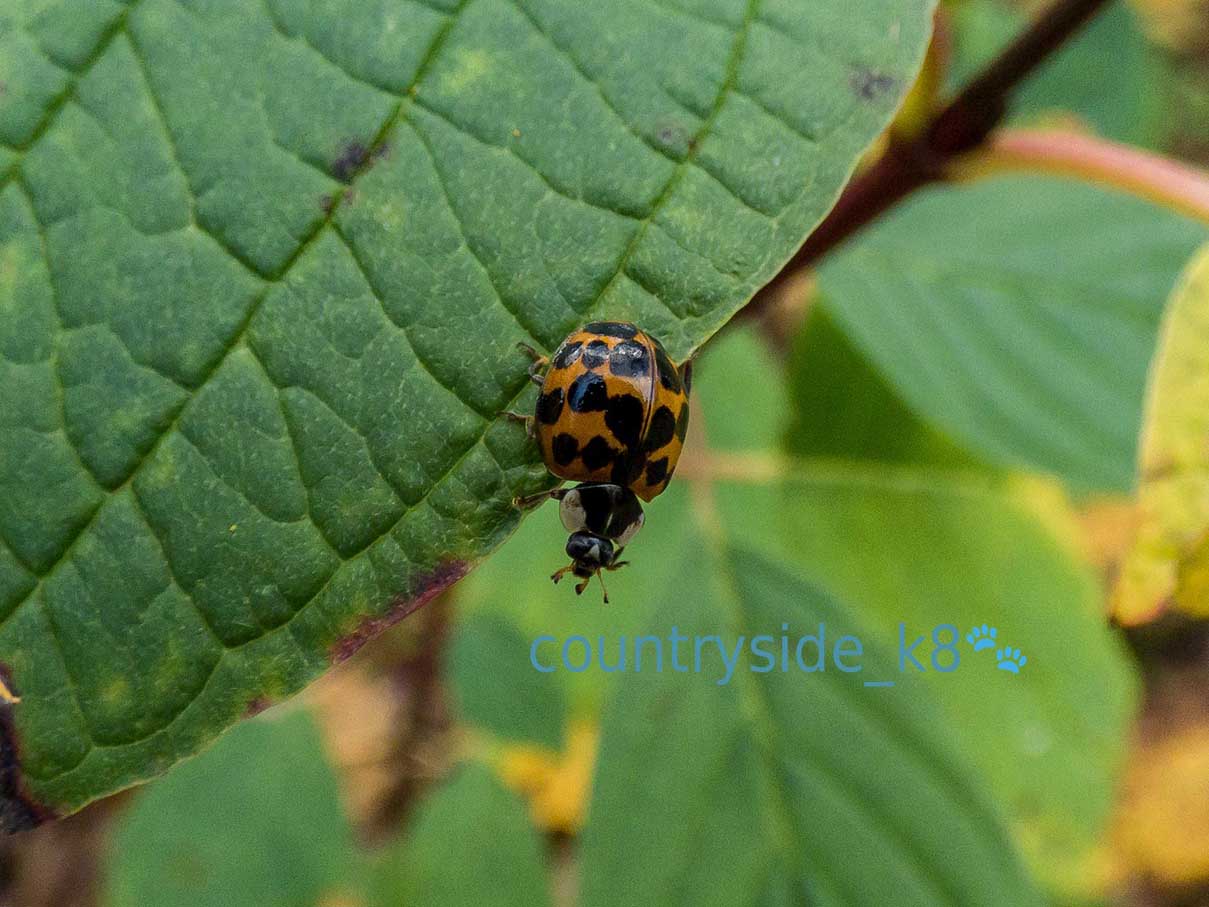
Harlequin Ladybird - succinea variety
Harlequin Ladybird
Latin name: Harmonia axyridis
There are three main forms of the Harlequin Ladybird, succinea, spectabilis and conspicua. Each of these forms show large variations within them. There are numerous colour and pattern forms but it is generally larger than most of the native ladybirds. The most common forms in Britain are orange with 15-21 black spots and black with two or four orangey-red spots. Their legs are almost always brown.
They can be seen from April through to October and are commonly found on deciduous trees, such as Willow, Sycamore and Maple as well as on plants such as Nettles. They hibernate through winter but will become active if it is a mild winter or the weather warms.
The Harlequin Ladybird feeds mainly on aphids, but also feed on scale insects, the eggs and larvae of butterflies and moths and other small insects, including other ladybirds. They will also feed on pollen, nectar, honeydew and the juice from ripe fruits. It has the potential to wipe out some of the native species.
The Harlequin Ladybird is an alien species and first appeared in Britain in 2004, but it is now well established and widespread in much of Britain.
Created: 23 October 2018 Edited: 27 October 2018
Secrets of Shaly Dingle
Own label and private label building products
We produce, brand and supply for some of the biggest names in the industry. Read more...
